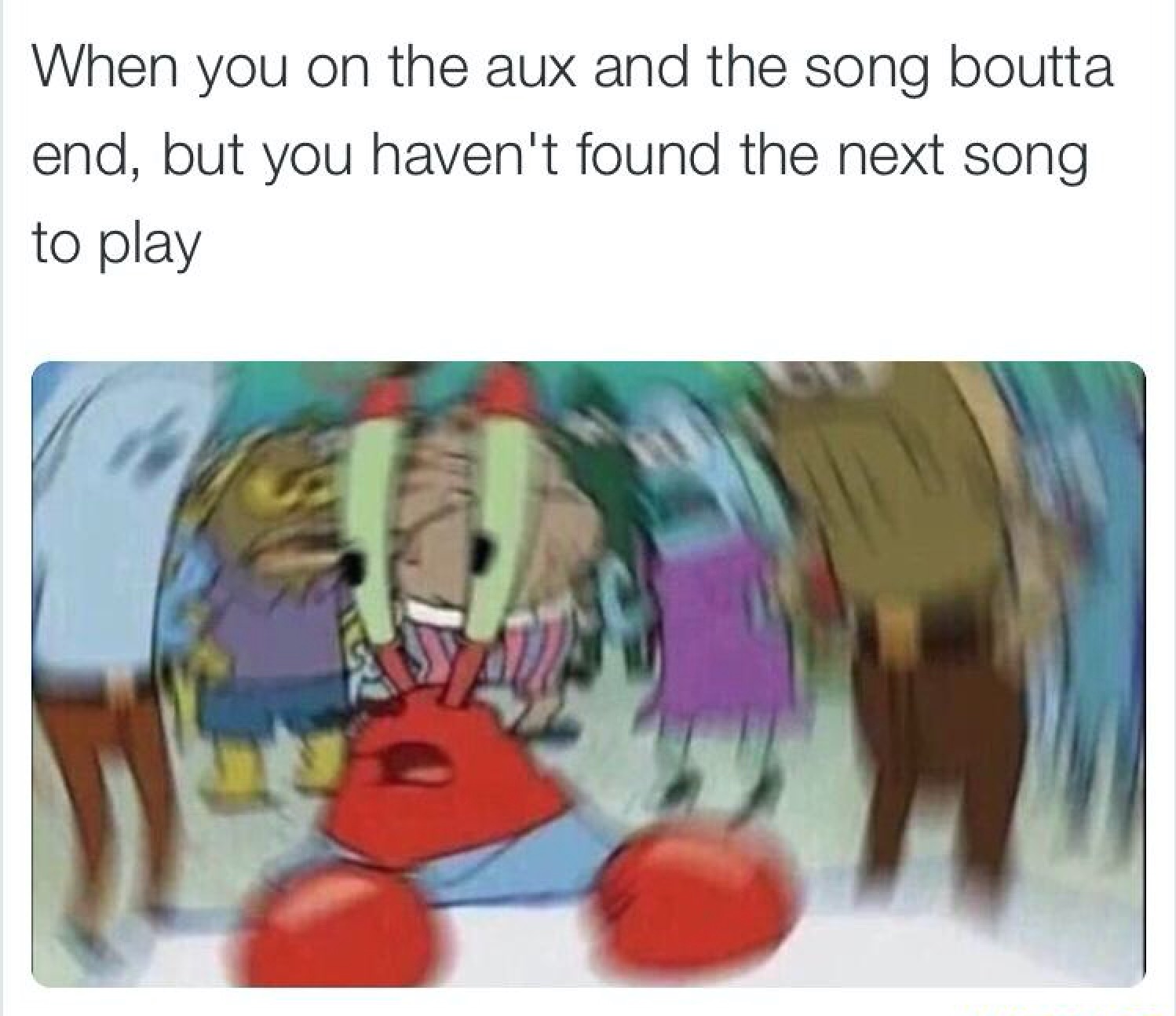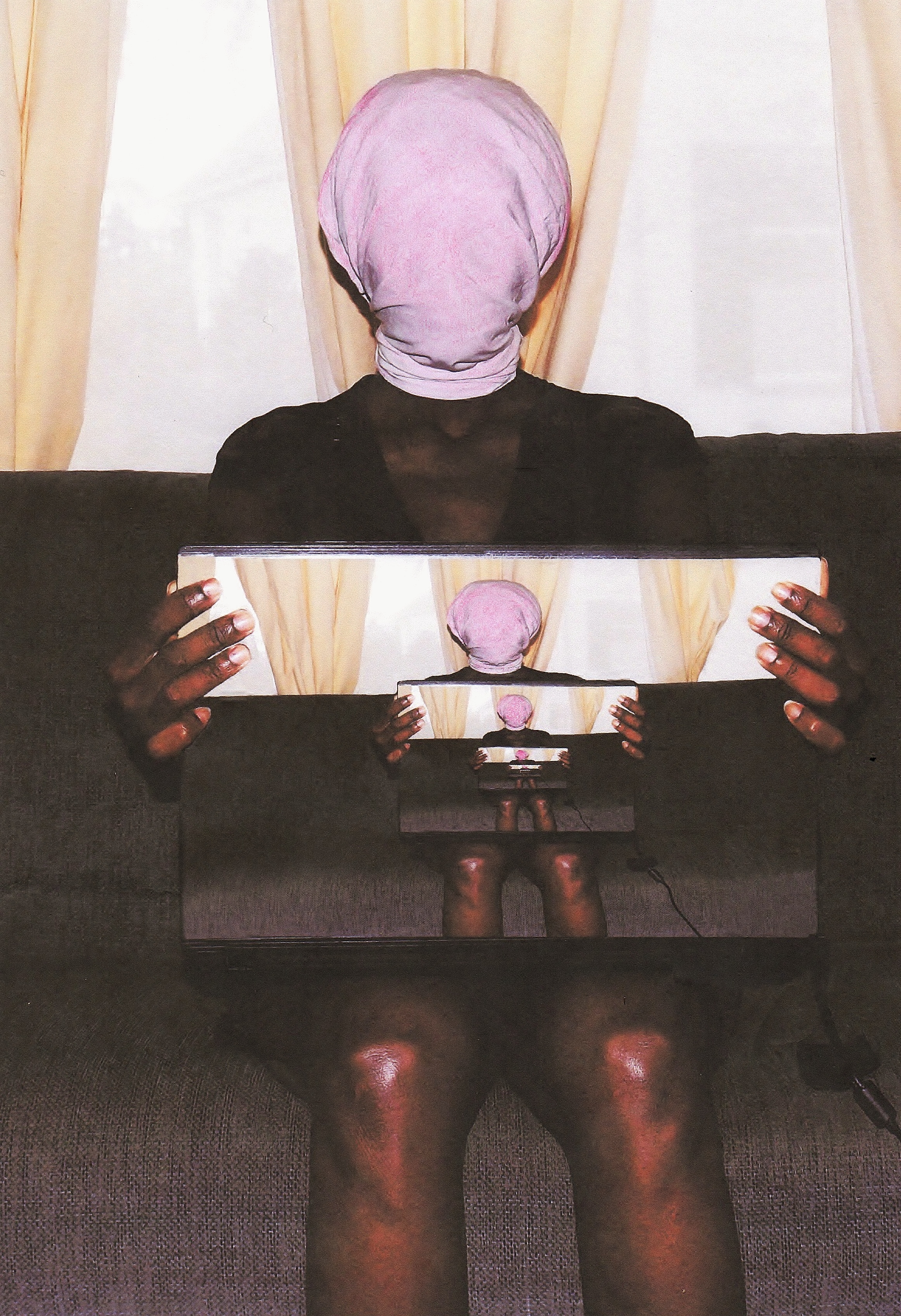“There is no other meaning than the meaning of circulation” — Jean-Luc Nancy
Black people love social media, and social media love black people. According to a 2015 Pew survey, nearly half of black internet users use Instagram, as opposed to less than a quarter of white users. Twitter is more evenly distributed but still mostly minority-driven. Alongside the rise of the meme in internet culture, we have witnessed black-user-produced content drift toward center stage. Not only is blackness broadly attracted to the internet, technology, and the future at large — exemplified by the rich traditions of Afrofuturist literature, house music, hip-hop videos, and more — but the internet is a prime condition for black culture to thrive.
What makes for this condition? Some, like Kodwo Eshun and John Akomfrah, say that the African diaspora prefigures digital networks in its effects on bodies and subjectivities. We, as black people, are no strangers to the alienation of a mediated selfhood. We have much experience with mass surveillance, a condition that the white avant-garde would have us believe is a recent development in state control. The diaspora is “a precursor to the post-industrial drive toward fluxes and deterritorialization,” as British Afrofuturists claim, meaning that blackness was always ahead of its time, always already a networked culture and always already dematerialized, thanks to the Middle Passage. In Black Marxism, Cedric Robinson wrote of the “ontological totality” or collective being of blackness — the preservation of which, he argued, is the primary charge of the Black Radical tradition.
This collective being goes beyond “collective consciousness.” It relates to and potentially exceeds the inability of a black subject to act on their own. Most — if not all — black Americans are familiar with the feeling. It is your parents telling you to behave in public, not just for the sake of the family’s image but implicitly because you represent the whole race. It is the media treating the Dallas shooter as a representative for all black Americans, forcing the Black Lives Matter organization to either claim or condemn him (ultimately condemn) and the rest of us to temper our public disdain for law enforcement. It is the necessity to “come correct,” for you are never simply yourself.
Historically, our collective being has always been scattered, stretched across continents and bodies of water. But given how formations like Black Twitter now foster connections and offer opportunities for intense moments of identification, we might say that, at this point in time, the most concrete location we can find for this collective being of blackness is the digital, on social media platforms in the form of viral content — perhaps most importantly, memes.
While I want to argue for an entwinement of blackness and memes, I would be remiss — irresponsible, even — to go any further without noting another way that blackness continues to circulate, with perhaps less frequency but with just as much, if not more, reach: through the aggressive circulation of videos that document black death or violence in general against black people. These videos proliferate alongside memes, brushing up against each other on the same platforms. Further, black death and black joy are pinned to each other by the white gaze, and if we see their intersection anywhere, it’s in the neo-mandingo fights of WorldstarHipHop. While these forms overlap in their mode of transmission and their involvement of black bodies, such violent clips are no longer thought of as “memes.” The term has evolved: once used to describe ideas or behaviors that are passed from person to person, “meme” now refers metonymically to internet memes, which are as trope-filled and easy-made as stock imagery, but are unprofessional and intentionally funny, with often-absurdist text floating on or above a low-res image.
When we say that the internet extends and exacerbates the same old offline relations, we mean it
Beyond the obvious, meme has taken on a more difficult and speculative connotation: that of #relatability, an ability to provoke a feeling of identification in the viewer. It is conceptually linked to the French même, which can be used to mean “same.” Recent meme history keeps the concept alive through the ongoing presence of such formats and language tropes such as “it me” and “that feeling when” (TFW). Relatability helps memes sustain a kind of cohesion in “collective being,” a collective memory that can never be fully encompassed; one can never zoom out enough to see it in its entirety.
One of the greatest tasks of blackness as collective being has been to hold itself together in something like cohesion, to exhibit some legible character. This cohesion only becomes necessary, perhaps, as the collective being is made visible to nonblack society. When considered on its own, in what to some are the shadows, this collective being is allowed to expand and contract at will. But when society shines a light on it, what is atomized and multiplicitous hardens into the Black.
In these shadows, in the underground, blackness has worked its magic. Think of the backrooms and basements where turntables were repurposed to birth hip-hop. Now, if as Laur M. Jackson contends, “blackness is the living tissue of memes,” then memes, so black in so many ways, black as hell, constitute something similar to Robinson’s “ontological totality,” a black collective being.
On the contemporary internet, things have been turned inside out. Exchanges that have historically taken place in the underground of black social spaces are now vulnerable to exposure, if not already exposed. The call-and-response creativity of Black Twitter is overheard and echoed by White Twitter, and viral dance phenomena like the whip are seized on by the likes of Hillary and Ellen. Together these objects — and the countless others in circulation, literally countless — create widespread visibility for blackness online. Blackness once again takes up its longstanding role as the engine of American popular culture, so that we find ourselves where we were in the 1920s with jazz, in the 1950s with rock ‘n’ roll, in the ’80s with both house and hip-hop — in a time loop wherein black people innovate only to see their forms snaked away, value siphoned off by white hands.
All the creative labor of the black collective being aside, there is a palpable blackness to much of this viral content — especially memes — that circulates independently from actual black people. This depersonalized blackness is shifty and hard to pin down — as is the blackness of any object or subject, really. It makes itself known through language, through an aggressive use of maneuvers associated with black vernacular speech, explicated in Manuel Arturo Abreu’s “Online Imagined Black English.” One finds captions littered with “bruh,” “fam,” “lit,” and, of course, “nigga.” This blackness is also signaled vaguely through the presence of black subjects. Athletes like Michael Jordan, rappers like Lil Mama and Birdman, and actresses like Skai Jackson have become vessels for affects extending beyond their own individual capabilities. It’s likely that many of us know Jackson not as a star on the Disney Channel but as the blue-dress girl, her picture used, with changeable yet ever familiar text, to signify levels of pettiness that exceed language.

The blackness of memes goes deeper than their contents, which is why they can’t be seen individually. Lauren M. Jackson points out that memes are also black in their survival tactics, that the ways they mutate and twist and split and circle back on themselves embody the already established trends of black cultural production and circulation. “Memes not only contain components of Black language, gravitate towards a Black way of speaking,” Jackson writes, “but in their survival latch onto Black cultural modes of improvisation to move through space and subsist in an ultra-competitive visual-verbal environment.”
Survival for some is simply competition for others. We have seen the content of popular memes “diversify” in recent months. On Instagram accounts run by largely nonblack, hip millennials, these memes wield some mimicry of African American Vernacular English, but usually to describe cultural phenomena affiliated with a more moneyed class of tastemakers. (See: the “goes to Berlin once” starter pack, or the plethora of belated #woke and “feminist” memes.) We have also seen the strange arrival of the SpongeBob image set, using cartoon rather than human subjects to communicate a dizzying array of affective positions. While Mr. Krabs may be a widely resonant, or enjoyably absurd, reference for our generation, his barely explicable appearance on the meme scene reeks of an anxiety around the raced human form and a subconscious impulse toward maximizing #relatable-ity toward blurry universalism. Jackson’s point about the blackness of the movement of memes is all the more important as the blackness of their contents gets vacuumed out.

The blackness of memes isn’t just in their survivalist measures; it pushes further, extending to their involuntary movement into nonblack networks as well. Memes move like blackness itself, and the meme’s tactical similarity to historical black cultural forms makes them — predictably — vulnerable to appropriation and capture. The meme is a form that allows for a sense of collective ownership among those who come into contact with it — black or nonblack. The meme seems open to appropriation and interpretation by whoever possesses it for a moment, echoing Fred Moten’s description of blackness as being only what we hold in our outstretched hands.
When we say that the internet extends and exacerbates the same old offline relations, we mean it. In keeping with historical precedent, the cultural and affective labor of black individuals online largely goes unrecognized and un(der)compensated. Compare the nonexistent returns seen by black teens for introducing the whip to the lifetime supply of Vans shoes gifted to the Damn Daniel kid or the nearly half–million dollars worth of swag that Chewbacca Mom received for her most abject display of consumerist bliss.

These dynamics make it tempting to enter conversations about cultural appropriation and property, about positive and negative representation, inheriting some of the constrictions of early black cinematic theory. We can make it about who owns an image: Does a white meme admin have any business posting an image of a black person? Are they laughing with or at us? Are they capable of laughing with us? Has my Explore feed been gentrified?
But in the online attention economy, this imbalance is more complicated than the familiar, semi-linear relationship between black production and nonblack appropriation. The labor of online content production is done with hopes of an audience in mind; memes are created for the very purpose of virality and, by extension, appropriation. Memes move in cycles of production, appropriation, consumption, and reappropriation that render any idea of a pre-existing authentic collective being hard to pin down. “Rather than capital ‘incorporating’ from the outside the authentic fruits of the collective imagination,” Tiziana Terranova argues in “Free Labor: Producing Culture for the Digital Economy,” “it seems more reasonable to think of cultural flows as originating within a field that is always and already capitalism.” Likewise, memes — even when produced by black users — cannot be viewed as objects that once authentically circulated in black circles for the enjoyment of the black collective but instead are always already compromised by the looming presence of the corporate, the capitalist.
As such, the meme will probably never manifest blackness in a traceable form such that it might be fully claimed by the black cultural body. The internet, which was advertised as a way to free us from our bodies, has merely confused our limits and identifications, providing just enough flexibility to, in artist Keith Townsend Obadike’s words, “make the same old burnt cork blackface routine easier.” Admittedly, it is difficult by contrast to mobilize the blackness of memes toward any sort of liberatory politics — to take it past essays like this one that just tease out these relationships. The meme’s structure is at once its potential energy, its possibility, and its limit. That is, the very properties that make the meme black make it seemingly impossible for black people to protect it, let alone benefit from it.
When we say “we need,” we grieve,” “we hope,” “we demand,” and so forth, we speak of something beyond a community
If memes reiterate the inequities of cultural appropriation, where could their potential energy and possibility lie? The meme resists traditional configurations of authorship and intellectual property, embodying the “post-productive” mode that had Nicolas Bourriaud so jazzed nearly 20 years ago when he declared it an ultimate threat to the prevailing “ideology of ownership” implicit in appropriation critiques. Memes replace the “ideology of ownership” with another form of value, one that Hito Steyerl argues is defined by “velocity, intensity, and spread.” In Steyerl’s “In Defense of the Poor Image” — a text that might as well be a treatise on the meme — she describes the “poor image” as “a snapshot of the affective condition of the crowd… The condition of the images speaks not only of countless transfers and reformattings, but also of the countless people who cared enough about them to convert them over and over again, to add subtitles, re-edit, or upload them.” In other words: TFW Hito Steyerl defines TFW.
Like the poor image, the meme finds its home only in this circulation — its true content is the many bumps and bruises that have occurred along the way. It is a copy without an original — a copy of a copy of a copy, and so forth. For better or worse, a meme asks instead to be considered as its total sum presence in circulation.
But most important is how the poor image, according to Steyerl, “constructs anonymous global networks just as it creates a shared history.” Memes, too, function this way, coalescing into a collective archive surrounding an event or cultural touchstone. A recent example is Desiigner’s recent performance at the BET awards. However, Steyerl’s “anonymous global networks” resonate in another, weirder way; her poor image shares the descriptors of blackness. What is the African diaspora but an “anonymous global network”?

So what if, in a crude transitive operation, we imagine blackness as a meme as a poor image? That is, the poor image might also be black.
The way Steyerl talks about poor images circulating, having been pushed out of the mainstream and into new alternative circulations, rings true of blackness. The poor image vibrates along the frequency of Fanon: In its gesture toward the unreality and nonontology of the image itself, it also points toward the extra-ontological black (non)subject. The black, the meme, the poor image is a subject or object whose definition exceeds her body, whose instantiation is contingent on her history, and on the “shared history” of all other subjects/objects like her, even when in the hands of others.
Edouard Glissant and Fred Moten, too, write of blackness as, in Moten’s words, a continual “consent not to be a single being.” For the most part, historically speaking, we could characterize the collective being’s attitude toward this consent as begrudging, held in opposition to the desire to constitute ourselves as complex, individual subjects. This “consent not to be a single being” reflects the same fungibility that means that violence against one black body cannot be isolated and understood as being against that body alone, where I am you and you are me, where “we are all [insert #nameofpersonmurderedbypolice here].” As Kanye notes in the recently released “Saint Pablo”: “When I turned on the news…they was buryin’ me.”
To claim this fungibility would contravene the inheritance of 20th century identity politics and antagonize it to its core. The 20th century taught us that one of our rights is a right to representation, not only politically but personally — that we have a right to be represented as we are, for our images to hold true. But what if one says to hell with that? Blackness, as poor image, as meme, is a copy without an original. There is no articulable ontology of blackness, no essential blackness, because blackness’s only home is in its circulating representations: a network that includes all the bodies that bear its markers, the words produced by such bodies, the words made to appear to have been produced by such bodies, the flat images that purport to document them, and so forth.
The meme as poor image, as black, operates against the rich image: the full-bodied high-res representation for which identity politics and visual theory taught us to strive. The meme is always writing and rewriting itself, operating, as Steyerl writes, “against the fetish value of high resolution.” In taking up this stance, it resists the co-conspirators of surveillance and neoliberalism in the ordering of bodies and desires. Perhaps we can render ourselves opaque, through our own serial, iterative excess.
All of these connections and equivalencies are clumsy operations that scribble a line from memes to blackness to the poor image, encircling them all together with a perforated line labeled “circulation.” What they have in common, at the bottom of it all, is their inability to stand on their own. They are made what they are by the circumstances of their larger body. Perhaps these strange resonances between the meme, Steyerl, Fanon, Moten, and more could be used to emphasize the circulation of blackness online and offline as an always already defining feature, and not one that is purely digital or contingent upon it.
The meme’s success is its reach and its rarity; its ability to snake through the underground and burst on the scene to fade, to re-emerge, to mutate itself
This echoes something that artist Hannah Black said a few years ago at a panel discussion organized by Rhizome: “We use words like modern and contemporary to signal changes in the arrangement of meaning of images. But I wonder if we could put more pressure on these apparent novelties if we could situate the present in this long history of circulating bodies.” The meme could be regarded as the latest development in this history. From the Middle Passage onward, we have been in circulation — shipped as goods to the new world, circulated throughout the Americas as labor, circulating ourselves as fugitives.
I am not thinking of memes themselves, as actual objects, as liberatory by any stretch of the imagination. If there is liberation, it will not take place on corporate platforms, where Mark Zuckerberg profits directly from the reproduction of our deaths, gruesomely replayed by well-meaning users with subconscious glee. Instead, there may be some power in the readily made, readily unmade, ever shifting, ever distributed meme — power in a “poor image” that slips through borders for those of us who are heavily policed, whom the state and other forces would like to make fixed.
It may seem trite, in times like these, to focus on objects whose banality is without comparison. However, I think that it also has never been more useful. As black people, we are constantly grappling with this question of collectivity. Where do you end and the next person begins? Faced with the immense pain of watching other black people die on camera, our sense of autonomy is thrown. When we speak of “we need,” we grieve,” “we hope,” “we demand,” and so forth, we speak of something beyond a collection of individuals and something beyond a community. The history of western thought denies this sort of organization of bodies and subjectivities, instead figuring us all as static, even proposing that we all aspire to this static individuation. As the world crumbles around us, all of us — and this would seem dramatic were it not for the fact that many have taken to counting down the days since the last tragedy, and it’s rarely a number in the double digits — it is worth questioning some of the things that we have been told we desire. In America, as we — black people — find ourselves toe-to-toe with the state, challenges to selfhood become useful not only in understanding our heartsickness and grief, but also in stirring the collective body toward political action.
Thinking of circulation instead of content, I wonder if memes can guide us toward a post-representational, post-identity politics, answering Fred Moten’s call in “Black Optimism, Black Operation” for an analytic that moves in and out of the shadows, “that moves through the opposition of voluntary secrecy and forced exposure.” What we need, he writes, “is some way to understand how the underground operates out in the open.” The meme moves so quickly and unpredictably as to establish a state(lessness?), a lack of fixity that might be able to confront our simultaneous desire for visibility and awareness of the violence it brings. It sustains an appearance of individuality (“it me”) while being wholly deindividuated (“same”).
The meme’s success is just this: its reach and its rarity; its ability to snake through the underground only to re-emerge and mutate; its continued operations of hiding, incubating, and exposing black cultural elements. As object lesson, the meme teaches a queer body politic, an Afropessimistic, black accelerationist approach to rendering oneself and rendering and rendering and rendering and rendering and rendering. (I use the word “accelerationist” with caution.) We have long been digital, “compressed, reproduced, ripped, remixed” across time and space. For blackness, the meme could be a way of further figuring an existence that spills over the bounds of the body, a homecoming into our homelessness.
